The following lesson is preceded by:
Preliminary Lesson 1
Preliminary Lesson 2a
Preliminary Lesson 2b
Intervals
Preliminary Lesson 3
Preliminary Lesson 4a
Preliminary Lesson 4b

Lesson 4 in Mrs. Curwen’s book is exceptionally long. She uses some asterisks in her book when she suggests stopping or breaking up the lesson. I’ve been using the 31st edition of her book as I’ve written most of this blog.
When I go back and look at her 14th edition (the first edition I read), Lesson 4 is much shorter than it is in her 31st edition. I recall that Mrs. Curwen continued writing and re-writing her book as a result of feedback from piano teachers. She saw a need for good piano teaching, and she did her best to meet that need.
I’m gathering that Lesson 4 continued growing as a result of the evolution of her book.
Now we are continuing on from 4a and 4b.
Lesson 4a: Introducing the Staff.
Lesson 4b: Assigning pitches to lines on the Staff.
c.) The Clefs
When we drew our eleven lined ladder, we determined that we must know at least one line if we were going to figure out the rest of the lines. We can call that line the key-line.
Which line did we use as our key on our eleven line ladder?
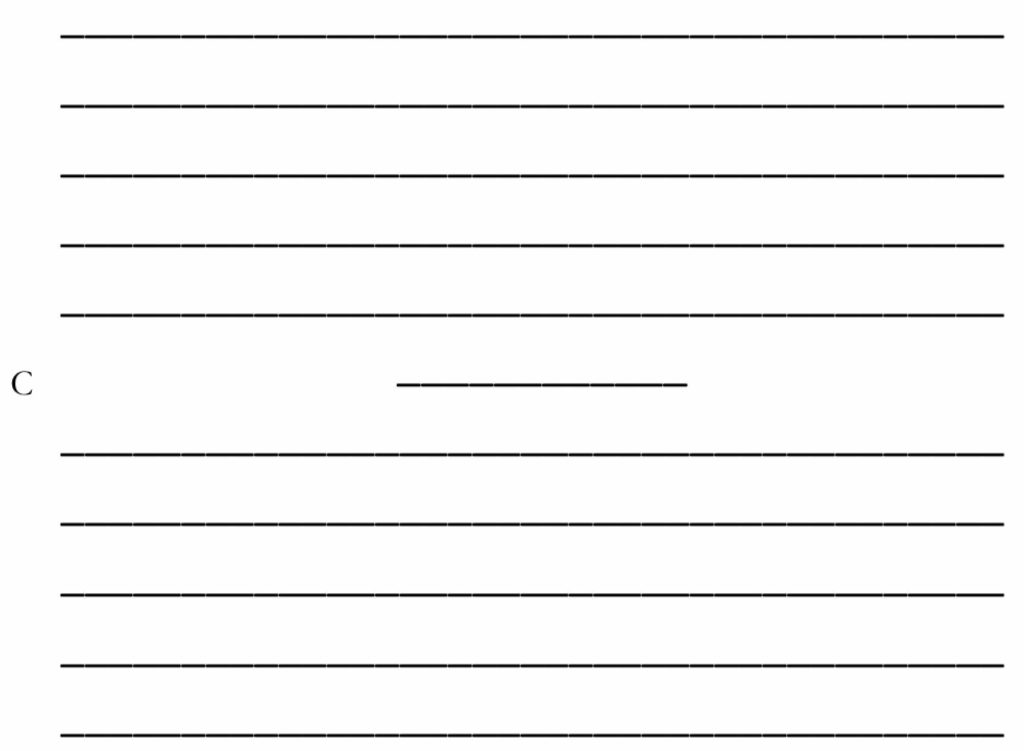
We used the middle C line as our key.
A long time ago, musicians used the letter C, but that C gradually became this quite fancy C clef. Like us, we need to know at least one line in order to figure out the rest. They identified the C line as the small middle line so they could figure out the rest of the lines too.
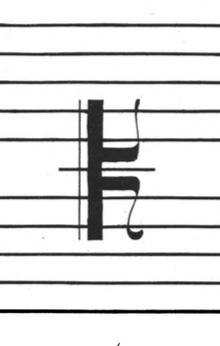
This sign is called the C clef.
The word clef may be new to you. It is the French word for key. We use the French word for this because we use the word key for many other things in music. (keys on the piano, the keyboard, key signature.)
It would be confusing to use the word key for so many things.
The C clef is the clef of the Staff. With this C clef, we are able to count up or down the entire staff and know the pitch of every line.
When reading music, though, we don’t have time to count up or down all the lines every time we need to play a sound.
We have already learned three lines.
1. The high F line.
2. The low G line.
3. The middle C line.
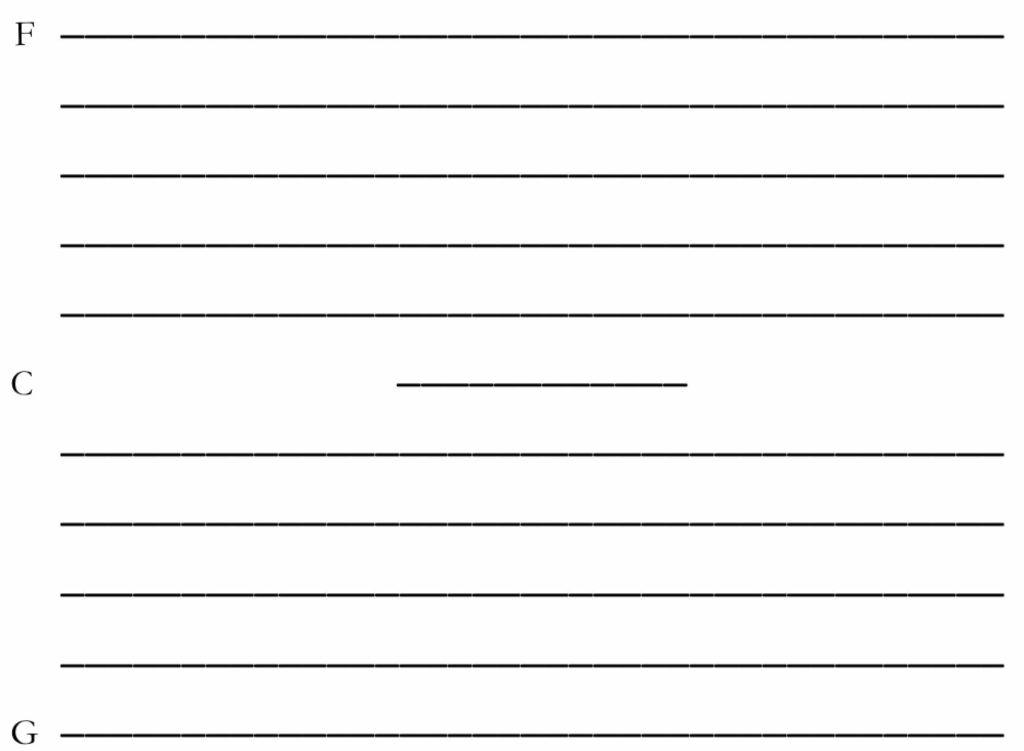
There are two other very important lines on the staff that we’ll learn next. One of them is two lines up from middle C. Can you find it’s pitch on the keyboard? What is its name? (Remember, every line represents an interval of a 3rd on the keyboard.)

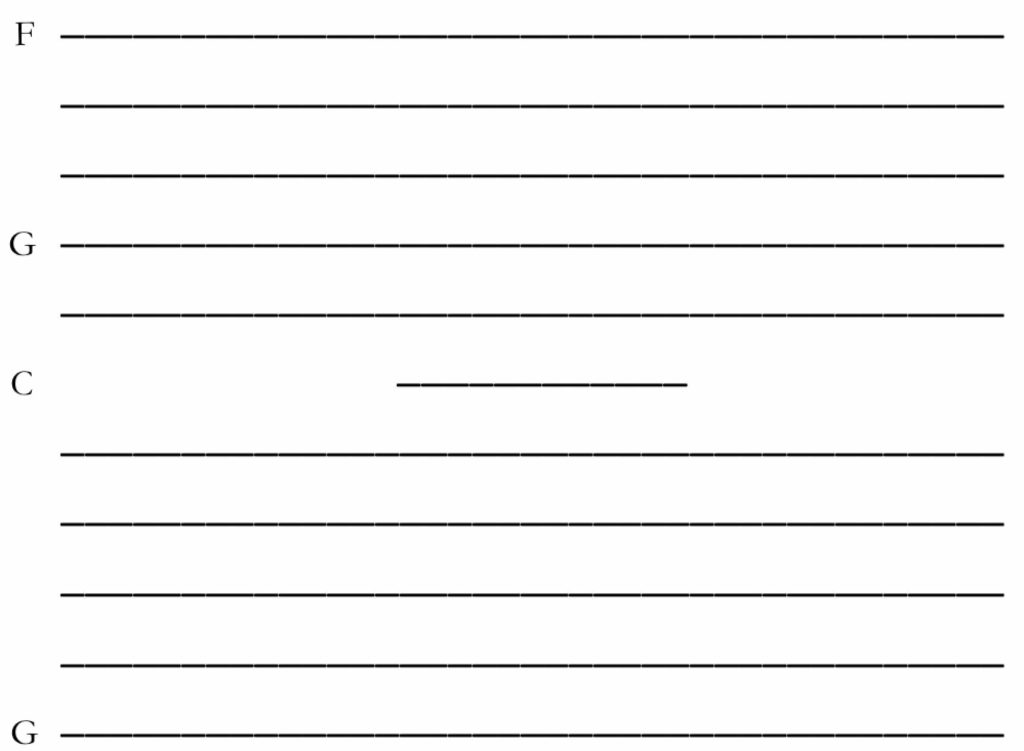
The other important line is two lines below middle C. Can you find it’s pitch on the keyboard? What is its name?


On these two new lines we just learned (G above middle C and F below middle C), we also have two new clefs for them.

The first clef pictured is for the G line above middle C. The second clef is used for the F line below middle C.
This is such a curious thing. You’d think one clef (the original C clef) would be enough for a staff. We will soon find out why these two new other clefs are also needed.
For now, let’s just name the first clef the G clef since it represents the G line above middle C. The second clef we will name the F clef since it represents the F line below middle C.
Ear Exercise
We now know two different G lines. Can you show them to me on the staff? Can I hear them on the piano?
Close your eyes. The teacher will play one of the G’s. Can the student tell you if it’s the G above middle C or the low G?
We also know two F lines. Can you show them to me on the staff? Can I hear them on the piano?
Close your eyes. The teacher will play one of the F’s. Can the student tell you if it’s the high F or the F below middle C?
To finish this lesson, take a look at the staff with all three clefs.
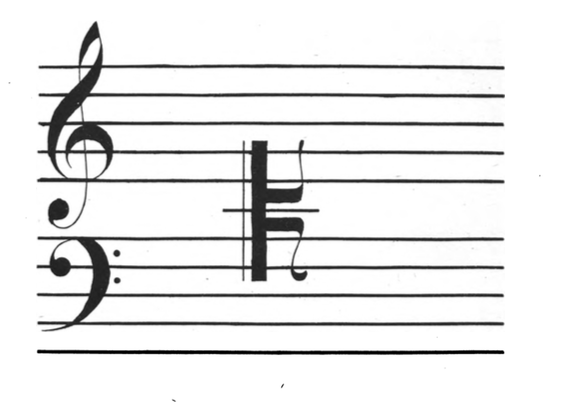
Summary
- Three clefs are used on the Staff.
- They represent the letters C, F, and G.
- The G-clef line is a 5th above middle C.
- The F-clef line is a 5th below middle C.
- We now have five lines on the staff that we know.
Homework
Practice drawing the G clef and the F clef very neatly and readily.
Prepare for the next lesson here: Lesson 4d.

Hi Kelli, I’m looking through all your preliminary course lessons to try to wrap my mind around them and don’t see any instructions for parents from Lesson 4c on. Are they on your site and I’m just missing them? Thank you SO much for all this information! I’m excited to learn more about the Curwen method in hopes of teaching my own kids.
Hi Heather, thank you for you question!
This specific post you are commenting on is in the Piano Teacher section, where there are written instructions for any parent teaching their child with the instructions provided in Mrs. Curwen’s Guide (without the assistance of video lessons). I have the instructions written out for Preliminary Lessons 1-5.
In the Student Videos and For Parents sections, you’ll see videos and instructions for parents helping their child. Right now, I have videos available up through 4b. 4c is not posted yet, so that’s why you couldn’t find it. My goal is to have the remaining student videos for Preliminary Lessons available by late spring along with instructions for parents.
Hope that helps!
Kelli
It does 🙂 Thank you Kelly!